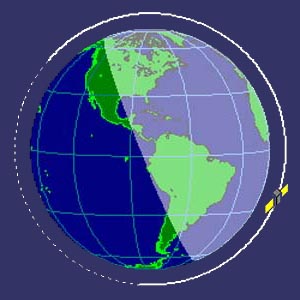 |
I-FLARES: "It was
a glaringly bright flash of light that quickly moved across the
sky, it was all over after a few seconds. Super fantastic."
|
||
These kinds of reports about strange manifestations of light in the night sky have become more and more frequent since the summer of 1997. Observers tell of extremely bright traces of light for several seconds, often more than ten times as bright as the brightest stars. Are they falling stars, meteorites or – heaven forbid – maybe even trendy hip extraterrestrials? Not at all, because what the mystery involves is about one by four meters in size and orbits around the earth at an altitude of 780 km: an Iridium satellite. What is that?Attempts
have been made in recent years to complete a network that is to
consist of sixty-six satellites to be used for mobile telephony.
A total of sixty satellites have been launched into outer space.
The Iridium system is intended to avoid the building of radio
systems on the earth, but it requires a remarkable number of satellites,
since every point on earth should always be within the range of
at least one satellite. To put it simply: Each satellite has three silver-coated antennas for wireless connections, about 88 by 186 cm in size. These are kept at a fixed angle to the earth. If the satellite is at the "right" angle to the sun along the course of its orbit, the antennas reflect the sunlight that falls on them to earth: this results in an extremely bright illumination of the satellite in the sky, like a bright falling star. As with all satellite illuminations, though, the Iridium flares can only be seen in the evening, just after sundown, and at dawn, just before sunrise. Since the orbits of the individual satellites can be very precisely calculated, the light reflections can be exactly predicted. Normally one would have to go through extremely complicated calculations to arrive at this information, if one considers the number of satellites. However, this is not even necessary. On the homepage of the German Space Operation Center, all you have to do is enter a city and you get a list of Iridium flashes in the coming week and their intensity. Heavens
Above Well then. Notes: a) An artificial falling star wish fulfillment network could be devised. Using precise calculations, everyone could make x-many wishes. Maybe we could even get rid of right-wing conservative governments this way. b) monochrom readers don't normally use expressions like "super fantastic", do they?
|
|||
